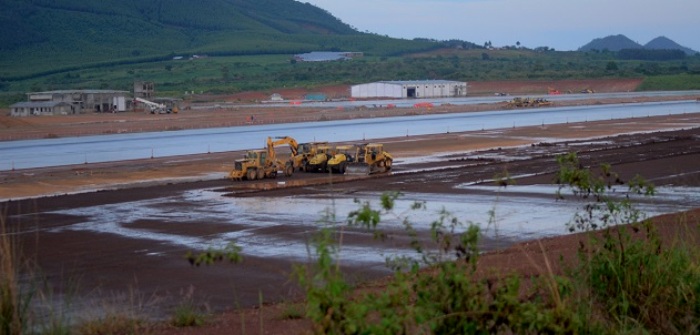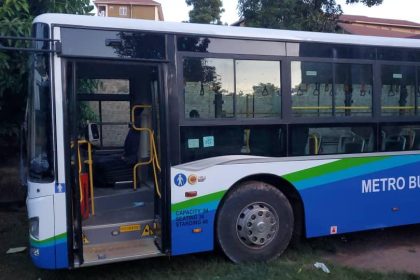Kabalega International Airport Community Engagement Model: Blueprint for Sustainable Development
 The success of the Kabalega International Airport Project’s community engagement lies in meticulous planning and execution.
The success of the Kabalega International Airport Project’s community engagement lies in meticulous planning and execution.
The development of the Kabalega International Airport in Hoima District in western Uganda demonstrates the effective application of the Equator Principles based on the International Finance Corporation’s (IFC) environmental and social performance standards, writes Christopher Burke.
The project resents a cost effective robust model for comprehensive community engagement. The US$250 million initiative being implemented by SBC Uganda Limited with support from United Kingdom Export Finance (UKEF) offers valuable lessons for stakeholders involved in large-scale infrastructure development initiatives.
Effective engagement practices are critical to ensure the positive impact of capital investment on project affected persons (PAPs), especially amongst the poor and most vulnerable in rural communities. The success of the Kabalega International Airport Project’s community engagement lies in meticulous planning and execution. An initial stakeholder identification, completed in 2018, anticipated challenges in registering people residing in the area and emphasized the need for coordinated development in the face of urbanization.
Talk-MUD, the company contracted to implement the engagement is a local joint venture involving a UK specialist in community engagement and a Hoima based firm knowledgeable in the vernacular languages and culture of the area. Talk-MUD developed a stakeholder engagement plan that effectively mapped out the construction phases and identified stakeholders. The basis of engagement was disclosure of activities and challenges equally and mutually by both sides, contractor and community. This approach laid the foundation for a well-organized, inclusive and proactive engagement process.
Monthly community workshops, Community Coordination Committee meetings and focus group discussions created spaces for dialogue and ensured diverse community participation. The involvement of community representatives in running the focus groups provided insights into the specific needs of the diverse demographic groups effected by the project. A grievance mechanism was established at the very start of the project and not only addressed concerns transparently, but managed to resolve 99.5% of grievances and requests showcasing the effectiveness of responsive conflict resolution according to SBC Public Relations Officer Amos Muriisa.
“The monthly workshops went beyond project disclosures and addressed broader community issues” according toTalk-MUD Projects Director Dr. Christopher Cripps. These gatherings quickly became platforms for disseminating committee outcomes and addressing health and many other concerns. They also provided training on gender-based violence, early marriage and other issues creating a holistic approach to community development. The Community Coordination Committee (CCC) meetings ensured that local leaders and representatives actively contributed to the decision-making process, fostering a sense of ownership and collaboration.
The use of radio talk shows and project notice boards was very effective in promoting transparent communications. The CCC Chair Jackson Tumukunde explained that human rights and biodiversity workshops, training sessions on community organizing, communication methods and the grievance mechanism not only empowered the community, but established a foundation for sustainable stakeholder engagement.
The key to success was SBC Uganda’s decision to base its Corporate Social Responsibility (CSR) program on a needs analysis derived from the CCC Meetings from the outset and provides an excellent example of how development initiatives can address multifaceted concerns. Tumukunde further explained that by focusing on water supply, sanitation, health, education and environmental issues, the contractor ensured CSR efforts were aligned with the detailed, practical and evolving needs of the community.
The success of Kabalega International Airport’s community engagement model is evident in the shift from addressing immediate concerns such as noise and dust to the prioritization of community needs. Continuous influx monitoring and impact assessments of the project on various facets of community life showcased a meaningful commitment to ongoing evaluation and adaptation. The contractor employed cutting-edge technologies for comprehensive impact assessment relying on satellite data to survey urban growth of affected areas. Monthly reports shared with appropriate stakeholders such as the Hoima District Local Government reflected a truly collaborative approach. This is indicative of how the CCC has the potential to play a broader role in defining and servicing the long term development needs of affected areas and securing their support, alongside the new facilities for the oil and gas sector which are emerging and which will remain operational for years to come.
As the Kabalega International Airport project nears completion, it leaves behind not just an airport; but a practical blueprint for sustainable and mutually beneficial development. The lessons learned from this success story can guide future projects and foster effective stakeholder engagement in the oil and gas sector and beyond suggested Hoima District Chief Administrative Officer (CAO) Hannington Kiiza. The construction of the Kabalega International Airport stands testament to the notion that successful development can simultaneously provide physical infrastructure beneficial to surrounding communities and build bridges between projects and the communities they serve.
Several key recommendations are emerging. 1) Advocacy for Continued Engagement Systems: It is essential for peer investors and contractors to maintain and share, rather than duplicate and fragment, established engagement systems such as the CCC for ongoing and future projects; 2) Understanding that community-contractor organization, which is set up to deal with the immediate impact of big projects, should extend beyond project completion, and has a long term development role to play. 3) Community organization thus created can lead to proposals for service companies within a municipality, sustained by continued CSR efforts which can ensure lasting benefits and development, and 4) Translation of Community Issues into Action: Mechanisms to translate community concerns into actionable plans with local governments, especially at the district level need to be enhanced. An increase in collaboration and the allocation of sufficient resources to local governments can address this gap.
The Kabalega International Airport’s community engagement model serves as an ideal example of how large infrastructure development projects can integrate the needs and concerns of local communities into their development strategy according to CNOOC Corporate Affairs Manager Zakalia Lubega. The emphasis on transparent communication, responsive grievance mechanisms and demand-led CSR initiatives has built trust and collaboration between stakeholders and the affected communities.
Christopher Burke is the managing director of WMC Africa, a communications and advisory agency in Kampala, Uganda. He has almost 30 years’ experience working on a broad range of social, political and economic development issues in governance, communications and peace-building based in Asia and Africa.

 Saudia’s 105 aircraft order stretches A320neo lead over rival Max
Saudia’s 105 aircraft order stretches A320neo lead over rival Max
 Uganda-Tanzania announce date for second joint business forum
Uganda-Tanzania announce date for second joint business forum
 Uganda to buy Dreamliners, 777F from Boeing
Uganda to buy Dreamliners, 777F from Boeing
 Entebbe in race against time as passenger traffic overruns capacity
Entebbe in race against time as passenger traffic overruns capacity
 Commuter bus operator Tondeka Metro loses city commuter business in web of intrigue
Commuter bus operator Tondeka Metro loses city commuter business in web of intrigue
 Uganda Airlines likely to miss Spirit A320neo delivery slots
Uganda Airlines likely to miss Spirit A320neo delivery slots
